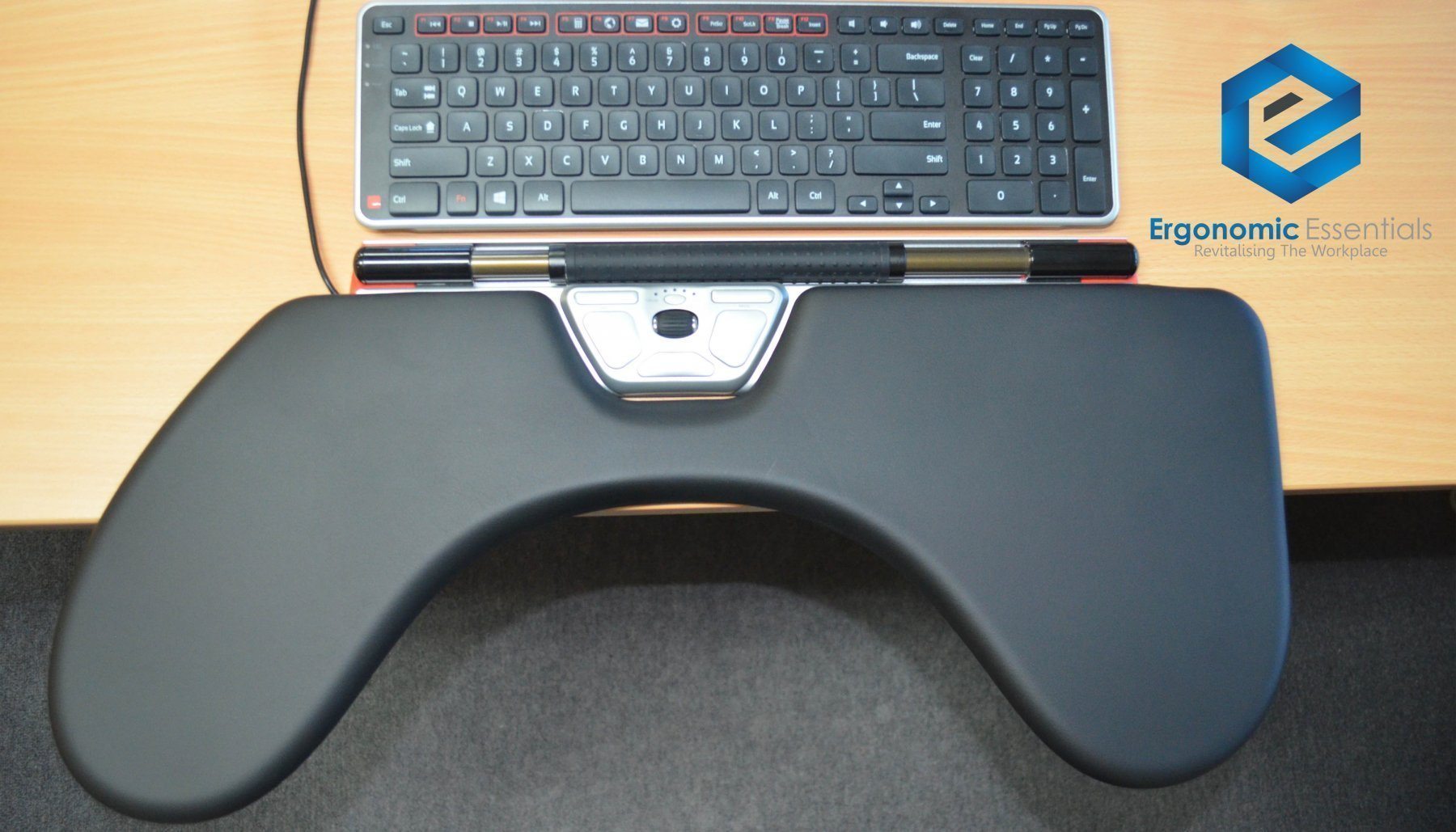A common health issue among many of us is wrist pain or discomfort when typing. We spend long hours, five days a week, at our desk typing away on a keyboard or laptop. And while working at a computer doesn’t seem like a dangerous activity, over time repetitive actions such as typing can put a strain on the muscles, tendons and nerves in the arm, wrist, fingers and hand.
This pain can also be conditions known as Repetitive Strain Injury (RSI) and Carpal Tunnel Syndrome. Wrist pain symptoms can vary depending on the cause. It may be described as a dull ache or sharp pain. The location of the pain can also vary. Other symptoms can include, swelling, bruising, numbness, tingling and weakness of the hand. It’s important to see a doctor if you are experiencing pain.

There are several things that can be done to reduce a person’s chance of developing wrist pain and discomfort.
Consider a wrist-friendly keyboard if you’re spending long hours at the keyboard For example, the Kinesis Freestyle2 Adjustable Keyboard is split to adapt to the specific needs of each user. By splitting the keys so they are wider apart, you don’t have to pull your elbows in and your arms can extend straight out. Most keyboards have a 10-degree positive slope from front to back which tends to bend your wrists.
The Freestyle2 has a zero degree slope which reduces the wrist extension.

The new Zergotech Freedom Keyboard includes innovative sliding wrist rests. Simple yet effective, these form the core of the design. These help to eliminate any awkward hand movements that are the main source of RSI and typing related pain.
A joy to use, these sliders will make you want to type.

The Rollermouse RED, Forearm Support and Contour Balance Keyboard Combo is another option that combines 3 products to put your hands in the perfect typing position while sitting or standing with great comfortable support.
It is also balancing the workload of typing and mousing between both left and right hands.


Use less force when keying on a keyboard
A slim ergonomic keyboard with low profile keys that are light and tactile to press, will help to ensure your wrist and fingers are flat and neutral in position when using the keyboard. The UltraBoard 950 is the latest compact keyboard by Bakker Elkhuizen. The keys have a light touch made possible by the application of a scissor mechanism instead of a traditional membrane, giving you very fine tactile feedback and less noise when typing.
Consider an ergonomic wrist rest if further support of the wrists is desired

A wrist rest can offer the extra support you need to avoid strain and pressure on your wrists. You can find one that suits a regular keyboard, compact keyboard and also your mouse.
The Fellowes Plushtouch Keyboard Wrist Rest offers superior comfort with Innovative FoamFusion™ Technology that relieves wrist pressure. The non-skid backing keeps the wrist support in place and antimicrobial protection keeps the product clean.

The sliding palm rests that come with the Zergotech Keyboard mentioned above, are also available by themselves. These can be used with other keyboards or mice and they help to support your wrist by gliding effortlessly around the desk as you type or mouse.
Using proper posture when sitting or standing at a workstation and keeping the wrists in a relaxed position
Your arms should be relaxed at your sides with your elbows slightly above the desktop and your upper and lower arm forming approximately a 90-degree angle when working at your desk. Your forearm, hands and wrists should be in a straight line with fingers relaxed. Ensure your wrists are not pressing against the hard edge of the desk, and your keyboard should never be higher than your elbows. See our Workstation Setup Guide for more details.
Taking regular breaks from using a keyboard
One of the most important preventive measures is variety and changing posture often. If possible, take breaks before getting tired. Short breaks can be very helpful if frequent enough. A break doesn’t have to be a rest break, it can simply involve doing something else for a while.
There are several easy wrist stretches you can do at your desk at work
Stretching before and after typing is a great way to improve blood circulation to those muscles and tendons in your wrists and hands to assist with recovery and reduce stress. Experts recommend stretches such as pushing your palms together like you are praying, rotating your wrists in a circle, and extending one arm with palm facing up and gently pressing your fingers toward the floor. Squeezing a stress ball firmly for 5 to 10 seconds can also build up the strength in your wrists.
If you are working on the go with a laptop consider a wireless ergonomic keyboard
Laptops are not designed for comfortable typing; they are designed for portability. Using a laptop keyboard feels like you are trying to type directly onto a hard surface. The best option is an external compact wireless keyboard that travels easily, and you can connect to your laptop.
The Ergoapt Wireless Compact Keyboard is lightweight with a low sleek profile making it a pleasure to type on. The absence of a numeric keypad makes it more compact for travel and allows the user to bring the mouse in closer when using an external mouse with the laptop.
The best ergonomic keyboards are all available at Ergonomic Essentials and they will make typing as easy as it should be whilst putting your wrist and hands in a comfortable relaxed position. If you have any questions or want to order any of the products mentioned above, give us a call on 1300 798 658 or contact us at sales@ergonomiceessentials.com.au. Otherwise, feel free to come into our showroom and try for yourself!